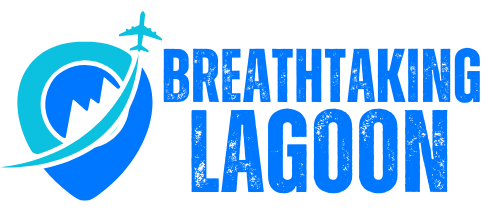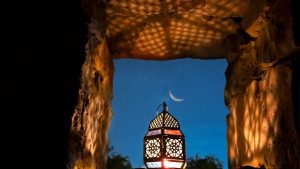menu
Follow Us
Subscribe
For those who’d rather recharge than rave, these eight destinations offer peace, perspective, and zero pressure to make small talk.
Jordan Cooper / Jul 30, 2025
For those who’d rather recharge than rave, these eight destinations offer peace, perspective, and zero pressure to make small talk.
Some places demand your energy.
They ask for smiles, conversations, group photos, and late nights you didn’t plan for.
But others?
They give you space. They welcome silence.
They feel like they were designed for people who’d rather listen than lead, observe than perform, and wake up to stillness instead of noise.
If that sounds like your kind of travel, here are eight places that understand you better than most people do.
The Westfjords are Iceland’s quieter sibling.
While everyone flocks to the Golden Circle and Blue Lagoon, this region waits patiently, untouched by mass tourism.
The roads here aren’t built for rush, which is probably the point. Driving between fishing villages feels like flipping pages in a very slow, very calming book.
I stayed in a guesthouse where the only sound at night was the wind. There were no plans, just rhythms—eat when you’re hungry, hike when the light looks good, nap when the fog rolls in.
It’s the kind of place that doesn’t ask you to do much of anything, and that’s what makes it restorative.
As Susan Cain once put it, “Solitude matters, and for some people, it’s the air they breathe.”
If that resonates, the Westfjords will feel like home.
By noon, Kyoto can be a tourist zoo.
But if you wake early—really early—you’ll find a completely different city.
At 6 a.m., temple paths are empty, streets are quiet, and the air smells like incense and earth. I rented a bike, coasted through sleepy alleys, and wandered through gardens where the only footprints were my own.
There’s something about being in a sacred space before the world wakes up that makes you feel like you’re in on a secret.
Pick one neighborhood each morning and skip the checklist. Sit under a maple tree. Sip matcha in silence. Watch the monks rake gravel and forget what urgency feels like.
The real Kyoto doesn’t shout—it whispers.
Imagine this: a simple wooden cabin, a dock, and a lake so still it reflects the sky like glass.
Now add a private sauna and a plate of rye bread with cucumber slices and that’s your entire day.
Lakeland is Finland’s way of reminding you that the most luxurious thing on Earth might be uninterrupted time.
There’s no pressure to explore. You can paddle if you feel like it. Or just sit on the deck, breathe in pine and birch, and let your nervous system recalibrate.
This isn’t a vacation for bucket lists. It’s one for recalibration.
After a few days of slow meals and screen-free evenings, you’ll feel like your brain has been gently ironed out.
Middle of the Atlantic. Lush volcanic landscapes. Cows in fields and crater lakes that don’t need a filter.
The Azores are like nature’s version of airplane mode.
Base yourself on São Miguel or Pico and let the weather decide your plans. If the sun’s out, hike to a viewpoint. If it’s cloudy, duck into a tea plantation or soak in a natural thermal pool.
There’s zero rush here—no must-sees, no crowds, no noise.
Even the roads move slow.
Vegan travelers, take note: the island-grown produce is incredible, and the soups are cozy enough to count as a full experience.
On one hike, I realized I hadn’t looked at my phone in five hours. Not because I made a rule. Just because I didn’t feel the need.
If you want to feel small in the best way possible, this is the place.
The landscapes are dramatic—glaciers, fjords, valleys carved by time—but the pace is anything but.
Start with a few well-chosen bases like Te Anau or Nelson. Instead of trying to “do it all,” let yourself linger. Walk trails that aren’t in the top ten lists. Stop at pullovers not for photos, but for breathing.
There’s something about being surrounded by this much natural beauty that shuts down your inner monologue.
As the American Psychological Association has noted, nature doesn’t just boost mood—it helps us think better and feel better, too.
This isn’t just a getaway; it’s mental maintenance.
There’s a moment in the Highlands—usually mid-hike or mid-drive—when you realize you haven’t said anything in a while.
And that no one’s expecting you to.
The landscape encourages that kind of hush.
Rolling heather fields. Stone cottages. Cloudbanks that shift every few minutes.
One afternoon, I pulled off a single-track road, sat by a loch, and did absolutely nothing for an hour.
It wasn’t boring. It was necessary.
Base yourself somewhere remote like Glencoe or Ullapool, bring a thermos and a waterproof jacket, and walk until your thoughts feel quieter than the wind.
John Muir said it best: “In every walk with nature, one receives far more than he seeks.”
In the Highlands, that feels especially true.
Slovenia doesn’t market itself like its flashier neighbors, which makes the Soča Valley all the more appealing.
Here, a turquoise river winds through stone canyons and sleepy villages, and you start to understand what it means to move at the speed of presence.
Most days, I walked aimlessly. Sat on a rock. Watched clouds crawl across the sky. Took photos just for the sake of noticing, not for posting.
The color of the river is real—it looks fake in pictures but glows in person.
Hikes here aren’t loud or crowded. They feel like long conversations with yourself.
There’s not much to do, and that’s exactly the point.
Big Sur gets crowded on weekends. But come midweek, especially off-season, and you’ll feel like you’ve been given a private version of the California coast.
I’ve done this trip solo a few times. I drive Highway 1 without music, stop at every turnout, and just… sit.
A picnic. A book. A sea cliff. That’s the entire itinerary.
What makes Big Sur special isn’t just the view.
It’s the feeling of spaciousness—on the road, in your schedule, in your mind.
I’ve mentioned this before, but quiet isn’t just the absence of noise.
It’s the presence of attention.
And this coastline gives you both.
Introverted travel isn’t about avoiding people. It’s about choosing intention over intensity.
Book fewer places and more nights. Give yourself unscheduled mornings. Don’t chase the “top ten must-sees” unless you actually care.
Anchor each day with one meaningful thing—a sunrise walk, a market visit, a scenic drive—then let the rest be flexible.
I build trips around grocery stores and walking paths. Markets give you rhythm. Walking gives you clarity. The rest tends to work itself out.
One more thing: introverts need rest from stimulation, not just for it.
So check your energy like you check the weather. Adjust plans as needed.
They don’t flood your senses.
They offer nature, solitude, and the kind of silence that doesn’t feel empty—it feels full.
They’re low on pressure, high on possibility.
They let you pause without justifying it.
And most importantly, they scale: you can dial up the people when you want to connect and dial them right back down when you don’t.
That’s not just a travel style.
It’s a way to take care of yourself.
Your dream trip doesn’t need a soundtrack or a slideshow.
It just needs to fit who you are.
So pick a place that speaks quietly—and go listen.
Jordan Cooper is a pop-culture writer and vegan-snack reviewer with roots in music blogging. Known for approachable, insightful prose, Jordan connects modern trends—from K-pop choreography to kombucha fermentation—with thoughtful food commentary. In his downtime, he enjoys photography, experimenting with fermentation recipes, and discovering new indie music playlists.
Jul 31, 2025
Jul 31, 2025
Jul 31, 2025
Jul 31, 2025
Jul 31, 2025
Jul 31, 2025
Jul 31, 2025
Jul 31, 2025
Jul 31, 2025
Jul 31, 2025
Jul 31, 2025
Jul 31, 2025
VegOut Media © 2025 All Rights Reserved.




